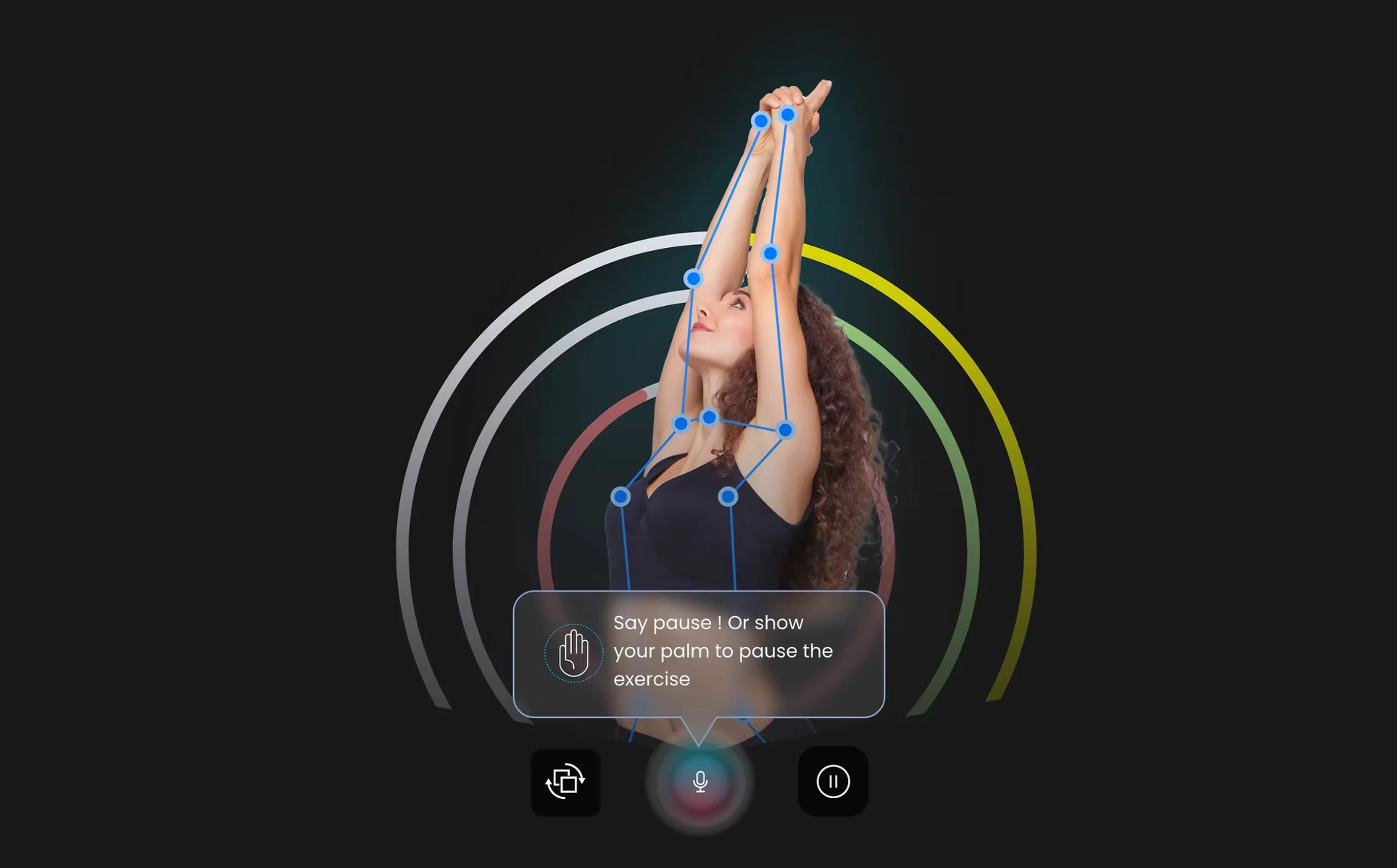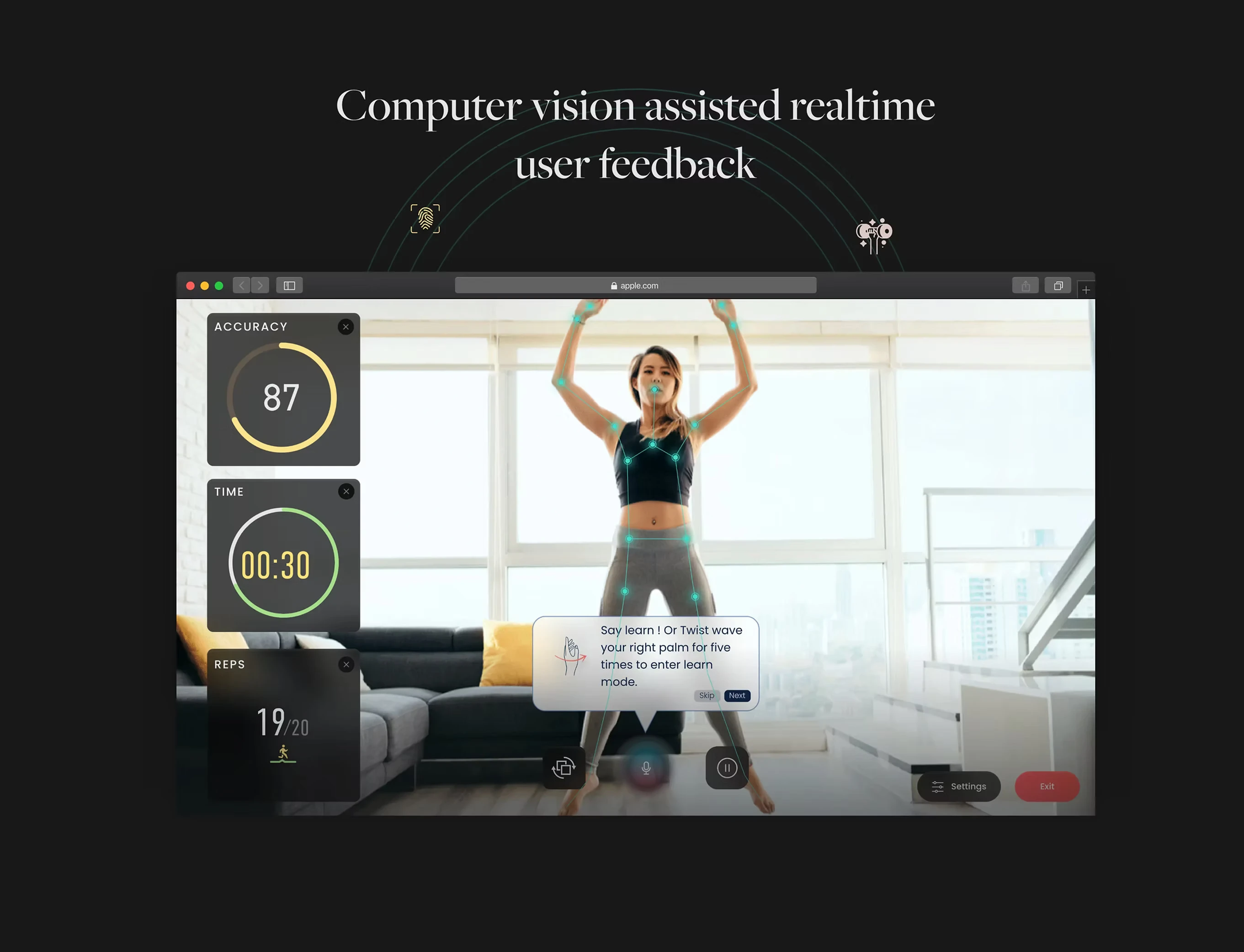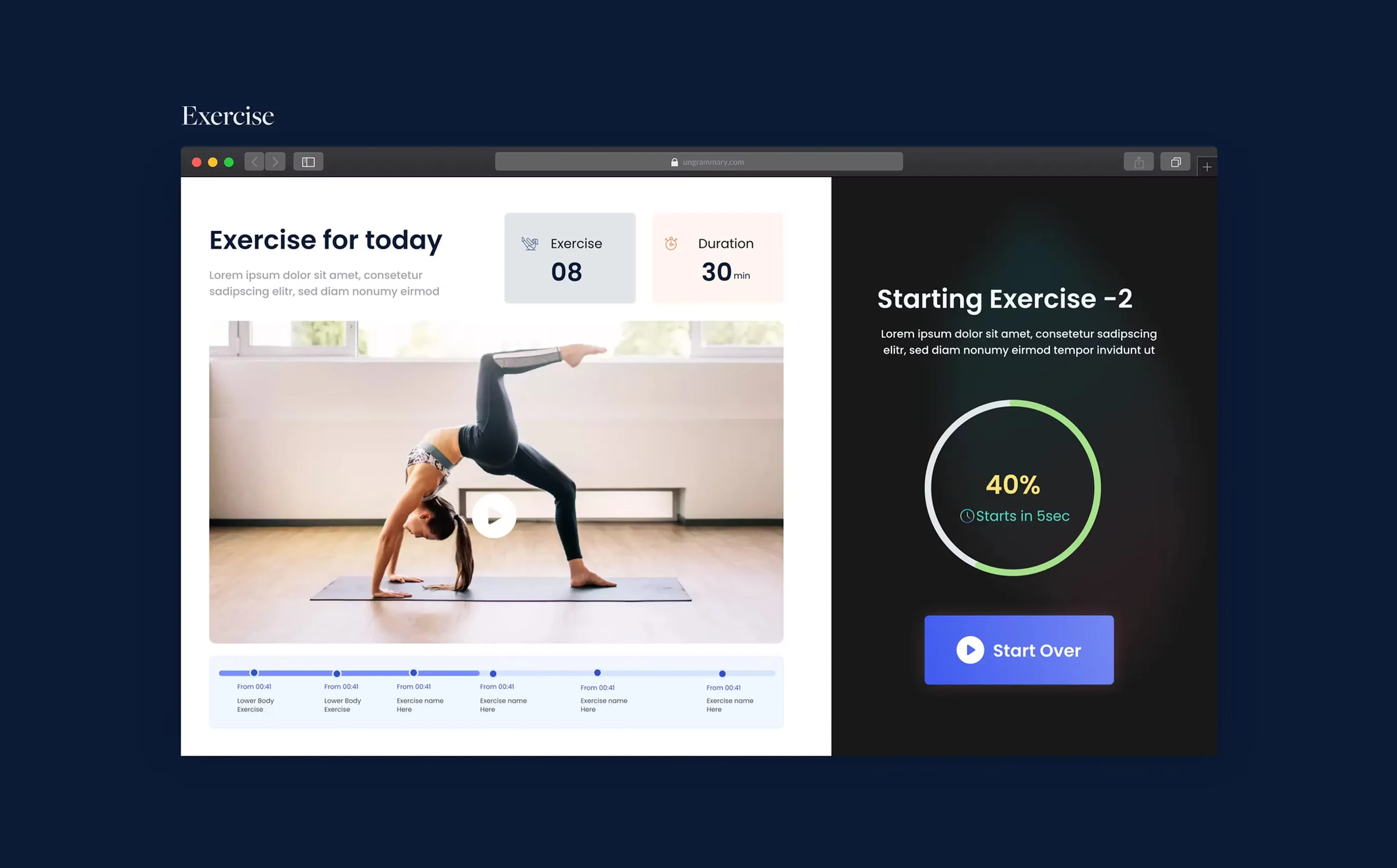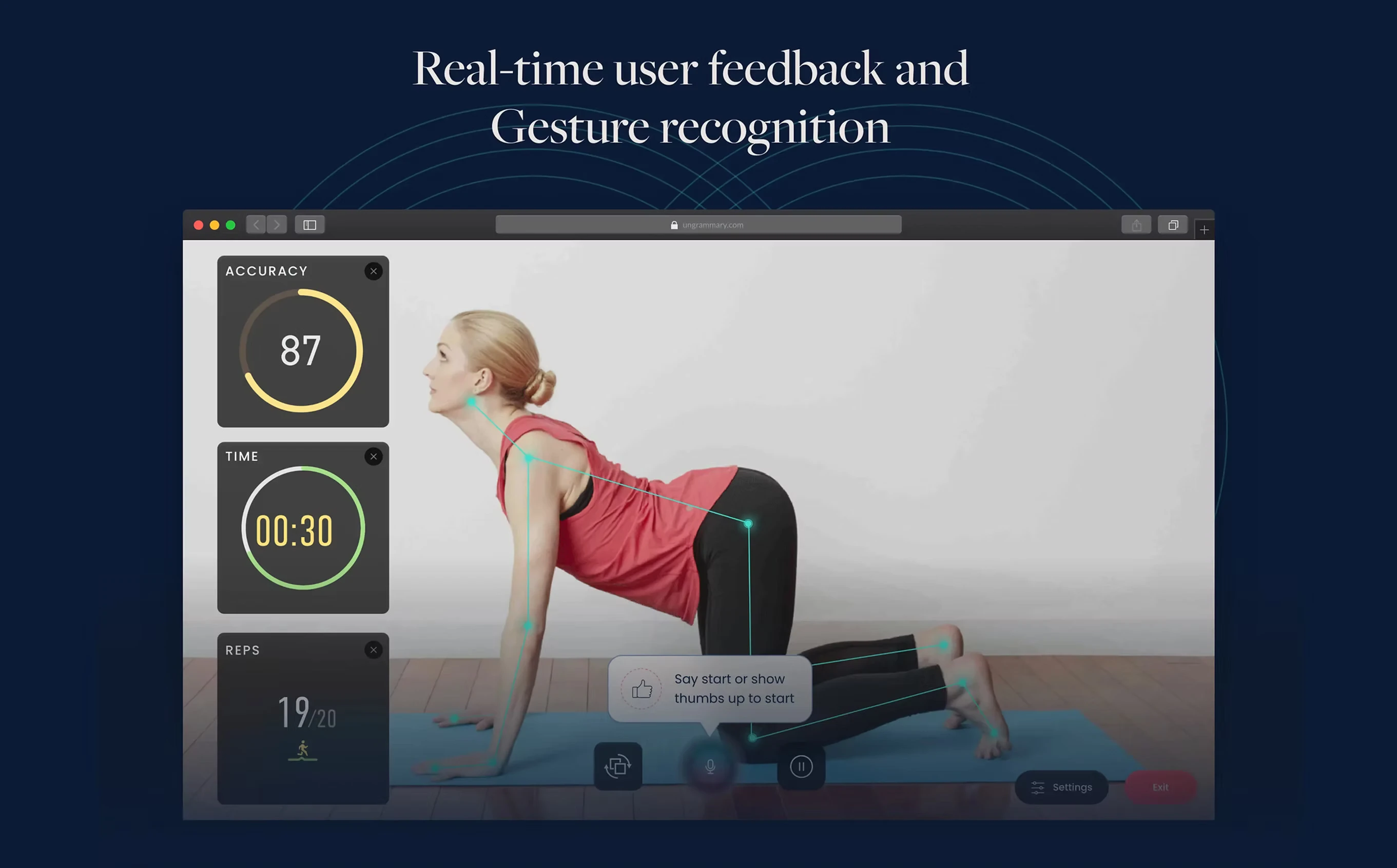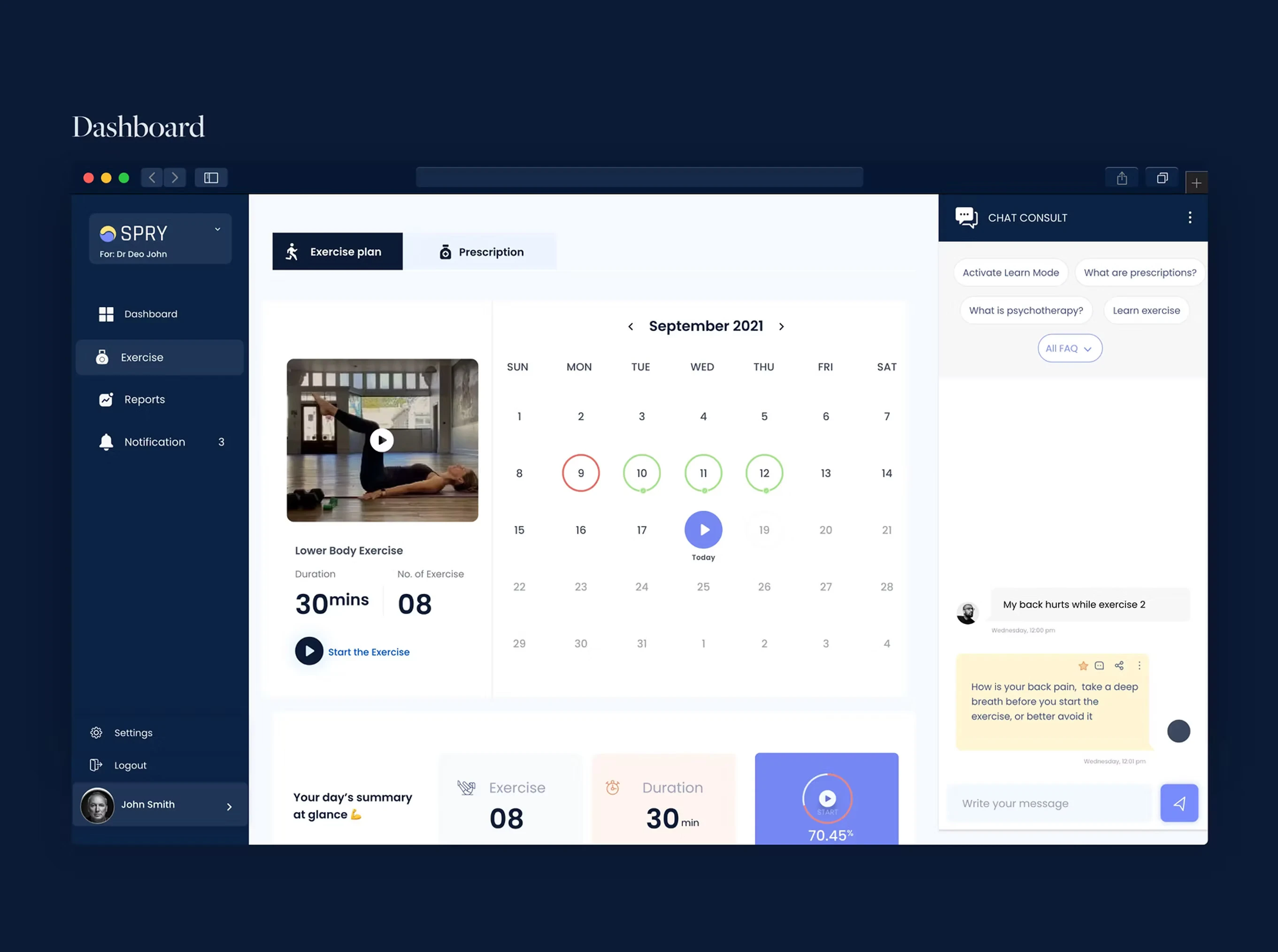Spry
an immersive virtual assistance platform that guides patients through their physical therapy journey, ensuring a personalized, supportive, and user-friendly experience to improve recovery outcomes.
My role
As a UI/UX designer on this project, I focused on transforming this vision into a functional MVP, designing seamless interactions, building trust through design.
Timeline
2021-2022
Team Members
5 People team including Product owner, UX manager, engineers, graphic designer and content writer.
Organisation
Ungrammary UX Agency
Highlights
Increased patient appointment bookings and reduced form errors.
Vertical
SaaS software in healthcare.
Project Overview
SPRY set out to transform how people experience recovery. Traditional physical therapy often struggles with drop-offs, inconsistent follow-through, and a lack of personalized care. SPRY’s goal was to bridge that gap—by combining AI-powered insight with real human connection.
Our mission was to create a digital platform that empowers patients to stay on track with their recovery from anywhere, while helping physical therapists deliver better care, faster. Through personalized guidance, progress tracking, and an intuitive experience, SPRY aimed to make movement health feel less clinical and more supportive—putting people, not just protocols, at the center of care.
The Challenge
Designing Digital Therapy That Feels Personal, Supportive, and Error-Proof
The main challenge was to replicate the empathy of real-life therapists in a digital space. We needed to design guided exercise modules that not only showed the right movements but also helped users correct mistakes and stay motivated throughout recovery.
Impact
Design that moved the business forward
Spry’s thoughtfully crafted UX/UI didn’t just enhance the user experience. It became a core differentiator in a competitive digital health market. The clarity and usability of the platform played a crucial role in building early trust with users and investors alike. Within just three months of launching the MVP, Spry secured $7 million in funding from Eight Roads Ventures, reinforcing the impact of good design on business growth.
$7 million raised
Secured funding from Eight Roads Ventures, Within just three months of launching the MVP.
UX Design & Approach
Blending clinical precision with patient-friendly design
To create a virtual therapy platform that truly supports recovery, we approached the design process with structured research, thoughtful flows, and warm, accessible UI systems.
01
Requirement gathering and project debrief
We started with stakeholder interviews and mapped key user journeys to understand the needs of therapists and patients.
02
Defining core experience steps
The therapy flow was designed around essential stages — from initial health checks to personalized exercise plans and real-time feedback.
03
Virtual assistance exercise design
We built intelligent modules that could detect common posture mistakes, guide users with corrective prompts, and simulate the presence of a therapist.
04
Supporting modules
Additional features like onboarding, therapy timelines, calendars, and profiles were designed to give users a clear view of their recovery journey.
05
UI design and visual system
A calm, accessible design system was developed with thoughtful UI components that made the platform feel warm, clear, and easy to navigate.
Posture cases and Design thinking
The platform digitally maps the user's skeleton and the movement points to identify the degree of exercise correctness. We identified six matrices using which we can signal a user whether they have maintained the correct posture. Key metrics were: Angle, Direction, Motion/Speed, Distance, Arcs and Rhythm
Key Learnings:
This project pushed me to think beyond screens and truly understand the ecosystems users operate within. Here’s what stood out:
Early stakeholder alignment accelerates product clarity
Conducting structured project debriefs and stakeholder interviews upfront helped prioritize features and eliminate ambiguity during design sprints.
Designing for healthcare requires precision and empathy
Creating exercise modules meant balancing technical accuracy with user-friendly guidance, especially for patients who may be in pain or unfamiliar with digital tools.
Scalable systems reduce friction in fast-paced builds
Establishing a modular design system early on allowed the team to move quickly, maintain consistency, and adapt easily as new product requirements emerged.
